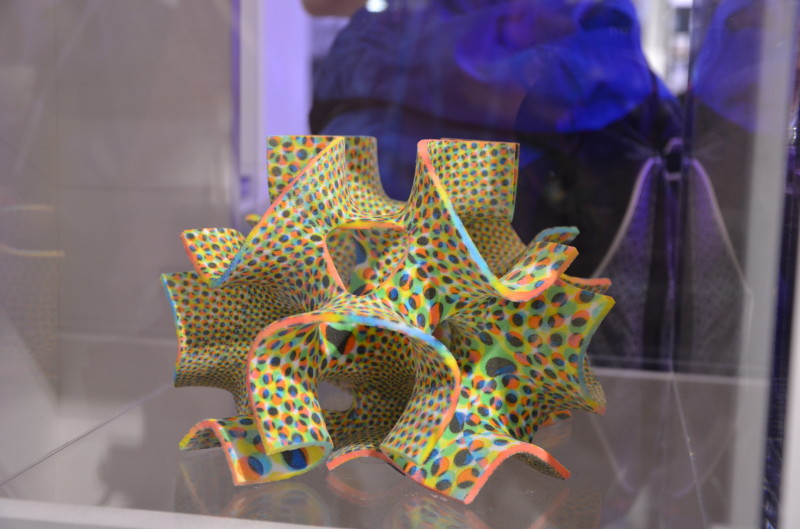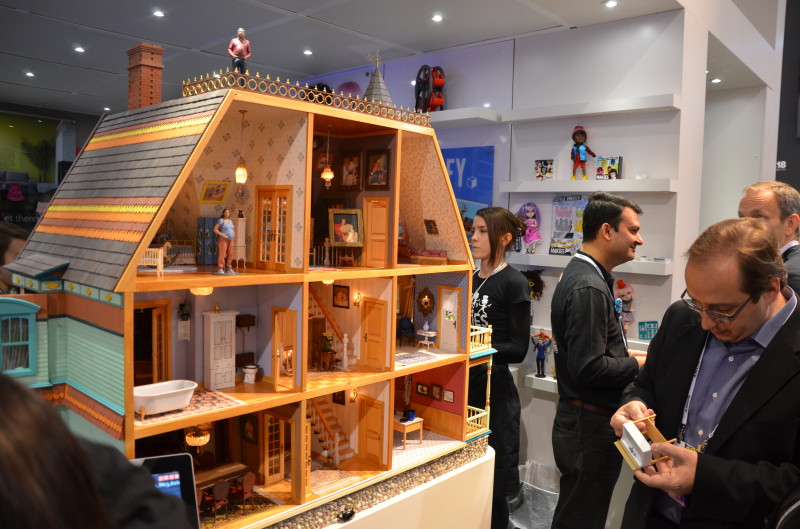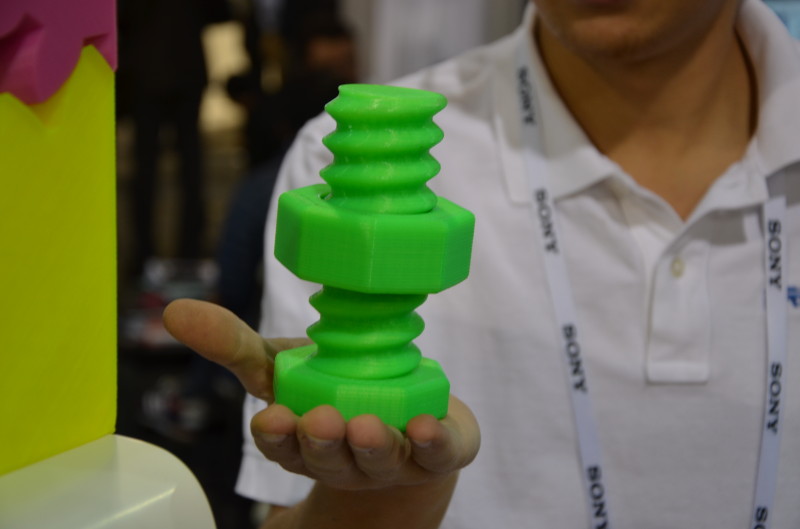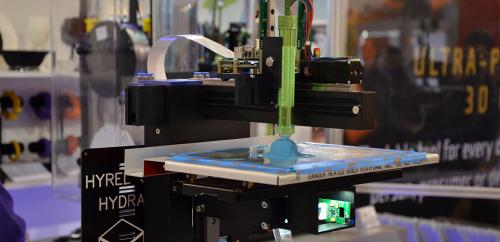Two hundred years ago, what would become the Industrial Revolution began changing how people lived, how they worked, and by its end, affected nearly every aspect of daily life. Today we’re in the midst of an equally transformative Digital Revolution. Born on the back of a nationwide broadband network, the Digital Revolution has allowed us to collaborate, innovate, and create at a pace completely unimaginable to 19th century industrialists. Had Andrew Carnegie seen an iPhone he wouldn’t have a clue of what to do with it, let alone conceive of it’s potential as a tool for change.

Edible 3D Printed Candy by ChefJet
What then does it say about the direction of innovation when 3D printers, one of the most important, influential, and commercially relevant devices at CES 2014, would have not just made sense, but functionally fit in at one of Carnegie’s steel mills? What it says is that we’re on the edge of a second Industrial Revolution. Touring CES’s 3D printing section is exhilarating. Booths are buzzing and there’s a near-tangible sense of impending change. It’s like looking at a rocket ship propped on its launch pad waiting for clearance. And it’s clear that printer makers are fully aware that 3D printing isn’t just a step forward into the Digital Revolution - it’s a manufacturing revolution all its own.

Victorian Era 3D Printed Dollhouse
Perhaps in a subconscious nod to the past, one of the biggest 3D printing outfits, MakerBot, had on display a huge Victorian era dollhouse complete with furniture and dolls all made by one of their currently available 3D printers. Beyond being able to achieve astounding detail, 3D printers are becoming extremely affordable. Some makers have already cracked the $1000 mark. “We see ourselves as part of a new Industrial Revolution”, said Robo 3D CTO Coby Kabili. Kabili went on to share how their original prototype was built out of wood and one of its first print jobs was to re-manufacture itself out of plastic. Let that sink in for a moment.

Working Nut and Bolt from Robo 3D
Even though they’re pioneers of a new Industrial Age that puts the individual at the center of the fabrication process, Kabili and crew (at the moment, it’s a 3 person company) are fully aware that they’re still a part of the Digital Age. The company’s online community is a key selling point for their products. “We have very active forums where users can discuss and share ideas. A big part of supporting our product is making sure people can use them collaboratively”, said Kabili. And that right there is what separates Industrial Revolution 1.0 from 2.0. It’s not just that new products, methods, and ideas exist, but that they exist as part of a network As the largest broadband provider in the U.S., cable facilitates not just digital pioneers, but visionaries across all industries. 3D printing may be a unique device in that it revolutionizes the manufacturing process, but like everything else at CES, it owes a lot of its success to accessible broadband over a healthy and ever-expanding nationwide network. Not only has broadband changed the way business like Robo 3D do research, marketing, and collaborate with manufacturing and distribution partners, it transforms how their customers use the product. It changes the basic value proposition of home manufacturing. Without an Internet community – without broadband - there really isn’t a product.
As cable expands and as broadband becomes faster and more accessible (Charter broadband customers just had a basic tier upgrade from 30 Mbps to 60 Mbps for no charge), devices like 3D printers become more than possible - they become probable. Technology revolutions are rare, but when they come, their ability to disrupt whole industries is profound. And as we enter the second Industrial Revolution, cable broadband providers that have supported it will grow right along side.
